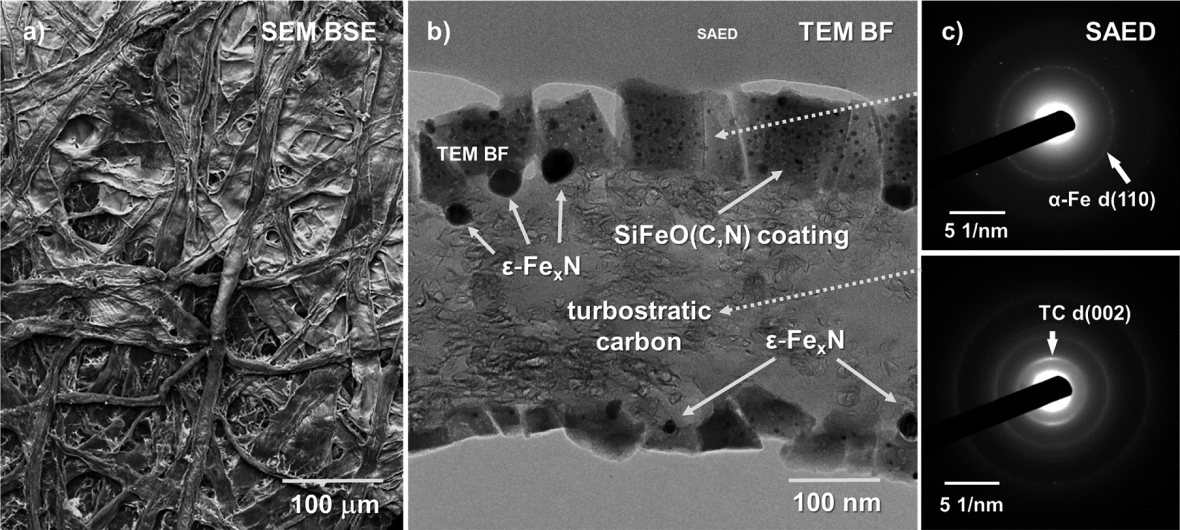Geomaterial Science

Ongoing Projects
Pseudomorphic Conversion of Cellulose-based Papers to Functionalized Ceramic Papers

Project Leaders
Johannes Peter and Hans-Joachim Kleebe
Description
Ceramic papers are a comparably novel class of materials that combine the capabilities of inorganic materials with the structure of interwoven fibers typical for cellulose-based papers. The properties resulting from this unique combination make them attractive for the utilization as refractory, sensoric and catalytic materials.
The fabrication of ceramic papers with a defined morphology exhibiting homogenous characteristics is not accessable by means of conventional sintering techniques. However, a promising approach is the infiltration of cellulose-based paper templates with suitable polymer precursors and subsequent pyrolysis, leading to a ceramic paper consisting of carbonized fibers encased by a polymer-derived ceramic (PDC) coating, resembling the natural phenomenon of pseudomorphosis. The adventage of this approach lies in the fact that the precursor can be tailored to the needs of the respective application and, therefore, enables production of highly designable ceramic composite materials.
Various polymer-derived ceramic papers are investigated by means of scanning and transmission electron microscopy (SEM and TEM), in order to understand the processes leading to the observed pseudomorphic conversion and enable future functionalization.


